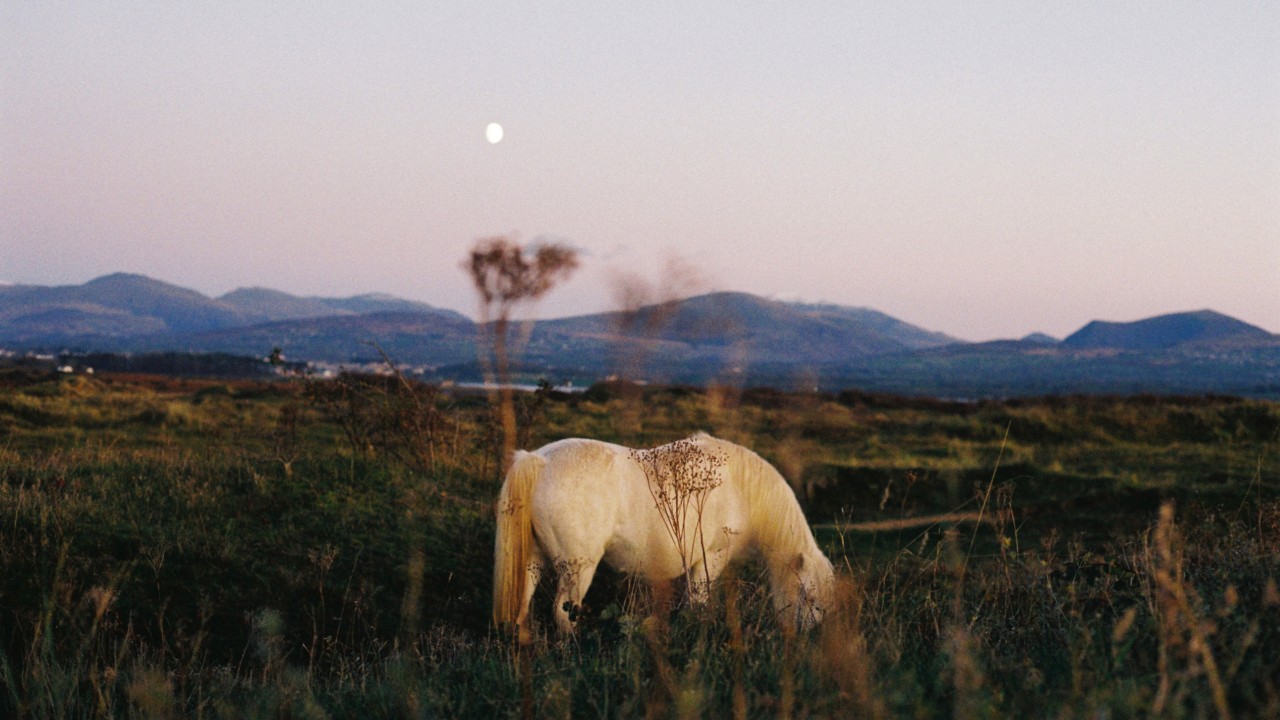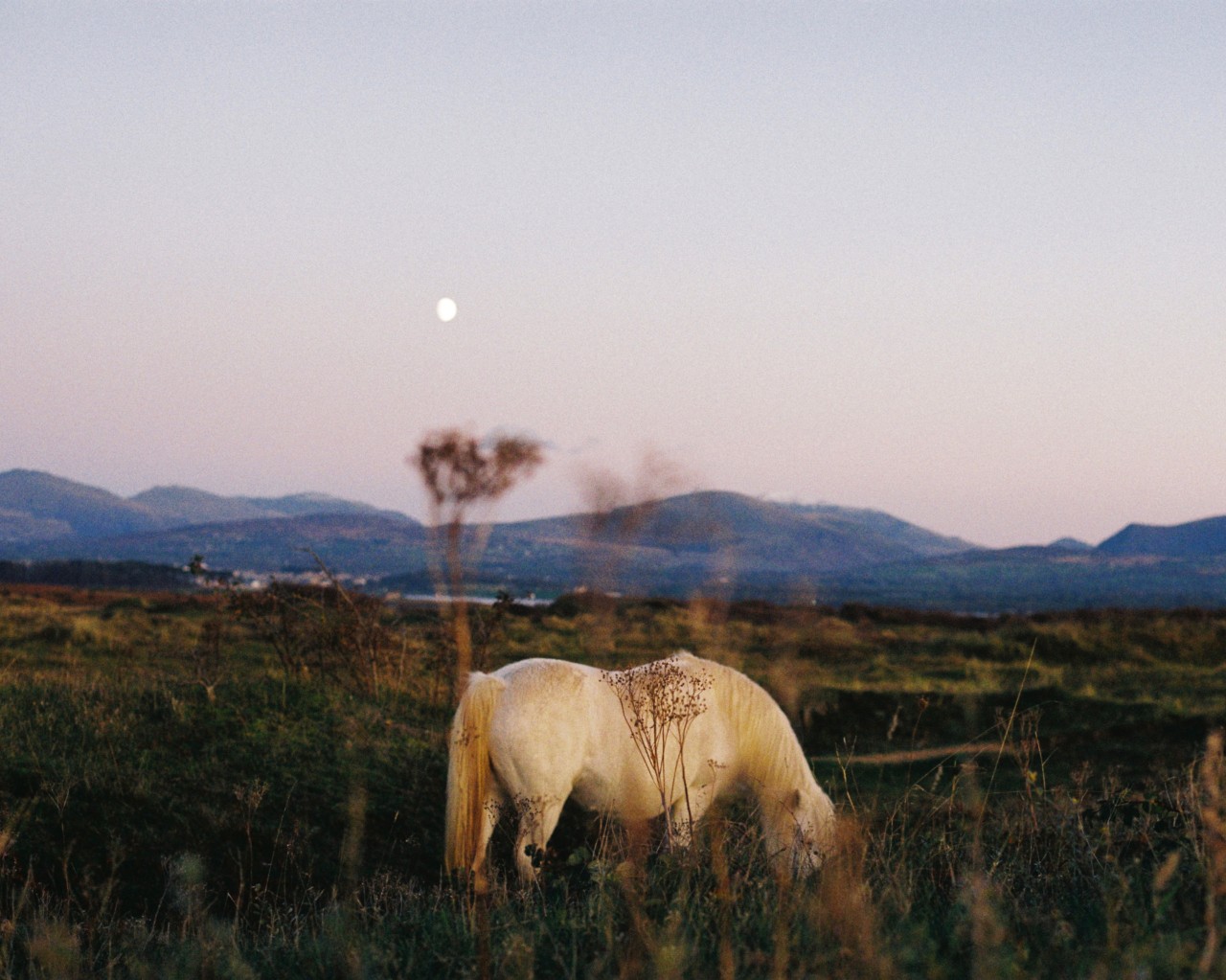

Photographs by Lena Aires / Kintzing
WORDS BY KATE MCMAHON
Earth looked spectacularly different 15,000 years ago. Eight-thousand-pound ground sloths nibbled on twigs and bark with the help of intimidatingly long claws. Dense herds of woolly mammoths grazed on the cold, dry grasslands of the mammoth steppe alongside shaggy-haired woolly rhinoceroses. The Pleistocene, the last geologic era before our own, was home to at least 50 species of terrestrial megaherbivores—plant eaters weighing more than 2,000 pounds. Giants roamed the planet, shaping ecosystems far and wide. Then, they vanished.
Much has been written about the extinction of the megafauna—debates persist if overhunting or climate change were responsible, nicknamed the “overkill” or “overchill” hypotheses—but less attention has been given to the consequences of a loss of such magnitude.
The disappearance of any species ripples across an ecosystem, up and down the food chain and into the landscape itself. Some conservationists are now seeking to counteract the ecological consequences of extinction. Many have recently looked towards the idea of rewilding: reintroducing species where they once roamed, or, in many cases, using proxies when said species are extinct. One idea, still in its infancy, is that this may be the solution we need in a hotter, more fiery world.
The loss of ancient herbivores, along with shrinking habitat for living ones, results in a buildup of dead vegetation that adds fuel to the flames of wildfires—in Canada’s boreal forests, across the African savannah, and even on the Arctic tundra.
While fire is a natural part of any ecosystem, modern climate change, driven primarily by the burning of fossil fuels, increases fire frequency and severity. The National Oceanic and Atmospheric Administration reports that extreme wildfire activity has more than doubled in 20 years. Rewilding proponents believe that reintroducing wild herbivores—both browsers that eat woody material and grazers that eat herbaceous plants and grasses—can help.
Herbivores reduce the available fuel for fire; create natural fire breaks in the landscape; and support ecosystems in developing into more mature, fire-resilient stages. By grazing, browsing, and dispersing seeds, these animals prevent landscapes from being trapped in the flammable early stages of regrowth, where frequent burns reset the cycle before more fire-resilient plant communities can take hold.
Scientists have seen the effect of grazers play out in the African savannah, where white rhinos engineer landscapes enough to alter fire behavior. A 2007 paper found that the presence of white rhinoceros, modern-day megagrazers, influenced fire regimes by maintaining scattered grass communities. Where white rhinos grazed, fuel load and fuel continuity decreased; where they were removed, fires were larger, more widespread, and less patchy.
This was just one example, but many argue the idea could be scaled. What if one key to containing devastating wildfires is not to control nature, but to return to it?
“We’re promoting the return of wild species to come back on their own.”
In the arid hills of northern Portugal, the land is changing. Once dotted with shepherds and their flocks, the villages have emptied and the sheep and goats are gone. Much of this can be attributed to the agricultural policies of Portugal’s dictatorship in the 20th century, along with socioeconomic pressures and the allure of urban jobs. Without livestock, which had filled the role of long-gone species like ibex and saiga antelope, dense scrubs and bushes are reclaiming the hillsides, growing thick and dry under the fierce sun.
But rural abandonment presents an opportunity to allow nature to return to the landscape. The conservation group Rewilding Portugal is now advocating for the introduction of grazing herbivores. The poster child of this movement is the Sorraia horse, a small but hardy stock that is well-adapted to harsh conditions. The horse is likely not truly wild, but a rare Iberian breed descended from the domesticated horse. Yet, many individuals are feral and form self-sufficient herds that have roamed the Iberian Peninsula for centuries.
In 2021, Rewilding Portugal introduced a herd of 10 Sorraia horses to the Great Côa Valley, which has some of the highest rates of land abandonment in Europe. They’ve grown in numbers since. The group also introduced a specially bred type of cow called the Tauros to serve as a proxy for the extinct auroch—the wild ancestor of cattle. Their diets may limit fuel for the fires, and barren trails shaped by the heavy hooves of migrating herds serve as potential firebreaks: Vegetation abruptly stops, and fires cannot progress.
The group anticipates other ecosystem benefits. By digging through soil, large herbivores can bury material and sequester carbon. They also trample grasses, allowing for other vegetation to take root and form a mosaic of different habitats.
“Without grazing, grasses grow tall and flammable. With grazing, grasses tend to grow deeper, storing energy in their roots to avoid being killed or trampled,” explained Pedro Prata, a biologist and team leader at Rewilding Portugal. “When grazing animals are present, wind-pollinated species like grasses are less dominant, leaving space for flower-bearing plants. This shift attracts pollinators, as well as their predators, creating a whole cascade of invertebrates.”
But horses and cattle alone are only effective grazers, not browsers; they are largely untempted by twigs and brush that fan the flames. To restore ecosystem functionality, rewilding initiatives require a diversity of species filling lost ecological roles, said Prata. That’s why Rewilding Portugal advocates for European bison, ibex, and beavers to be reintroduced to the region in the future. Predators play a role, too; they move herbivores around the landscape, preventing overgrazing in one area.
“We’re promoting the return of wild species to come back on their own, including roe deer, red deer, and fallow deer. When the deer come back, so do the predators,” Prata explained. “There is already a presence of wolves and lynx, but the populations are unstable at the moment. Our work is to promote the conditions to allow them to settle and actually act as a top predator for the whole circle of life.”
“The outcomes may not be as simple as the expectation that returning the lost species will restore conditions to what they were.”
Of course, introducing species can always have unintended ecological consequences—including the extirpation of local species, spreading pests and parasites from introduced individuals, and exacerbating human-wildlife conflict. Indeed, a 2021 literature review found that unintended consequences are common when deliberately introducing species to ecosystems. For that reason, some ecologists and conservationists have called for caution and research before implementing rewilding projects.
“Introducing species for rewilding or other management objectives is complex,” said Dr. Dean Pearson, an ecologist at the United States Forest Service, who was the lead author of the literature review. “This is true even when reintroducing native species to historic ranges because many ecosystems have changed greatly since the species was last present. The outcomes may not be as simple as the expectation that returning the lost species will restore conditions to what they were.”
Nonetheless, Rewilding Portugal believes their initiative is working. There hasn’t been a fire in the Greater Côa Valley—which historically averages a large fire every six years—since 2017. One recent study from the region found that semi-wild horse grazing effectively managed vegetation composition and reduced wildfire risk. A 2021 research initiative also found that semi-wild horse grazing was an effective land management strategy for reducing wildfires, enhancing plant diversity, and capturing carbon in Galicia, Spain.
“Instead of using machinery to cut vegetation and control fires,” said Prata, “we use large herbivores to do that work year-round, for free.”
There’s hope that reintroducing herbivores can reduce wildfire risk elsewhere, such as in California. For millions of years, the state’s grasslands and forests were grazed, browsed, and trampled by megafauna such as ground sloths, bison, camels, horses, mammoths, mastodons, and oxen. When these species largely disappeared at the end of the Pleistocene, gigantic herds of pronghorn antelope and elk filled their ecological roles. But most of these species, too, are now gone from much of the state. Their absence—along with the introduction of flammable invasive species like eucalyptus—has altered California’s fire dynamics.
In April of this year, California Gov. Gavin Newsom announced $170 million in additional funding for wildfire prevention in the state, with a chunk allocated for clearing vegetation. But what if, instead of clearing brush manually and laboriously, the state brought back the animals that used to do it?
The idea is catching on across the United States. A bipartisan group of senators from California, Kansas, Hawaii, and Oklahoma introduced federal legislation promoting wildfire mitigation through grazing in February. Yet the bill centers on domestic livestock like goats and cattle. These animals can help, but only when managed correctly. Studies show livestock exacerbate fire risk in certain contexts, such as when animals are confined or in high densities. The key is mobility, but there tends to be pushback to free-roaming animals wandering onto private property.
Moreover, livestock and even wild herbivores feed selectively. Thus, “the idea that introducing herbivores will reduce fire risk is simplistic,” said Pearson. If their feeding reduces highly flammable species or overall vegetation, fire risk can decrease—but if grazing encourages the growth of more fire-prone plants, the risk can just as easily increase, he explained.
That’s why rewilding initiatives can’t exist in isolation, said Prata. Rewilding Portugal is advocating for holistic integrated approaches to landscape management: community initiatives that boost fire-response times, cultural shifts to embrace free-roaming animals, and detailed research into the region’s fire dynamics.
Instead of relying on machinery, chemicals, or ever more fire suppression, rewilding advocates say the more radical idea may be the oldest one: Let nature operate on its own terms, by putting animals back where they once roamed.
One Wildfire Solution? Letting Herbivores Run Wild